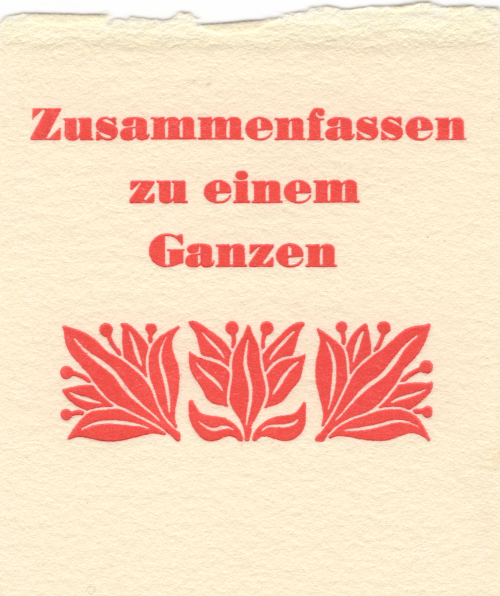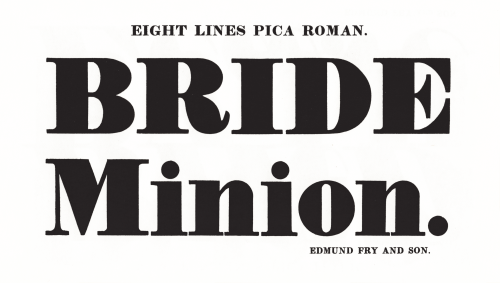fat faceapt german phrase, which permeates german literature. translation i like to give: gathe
fat faceapt german phrase, which permeates german literature. translation i like to give: gather together to form a composite. set in ultra bodoni [lanston monotype 675]; w/ tailpiece of ornamental border [lanston monotype 153-4].letterpress on rives heavy weight, buff.bodoni never cut anything so black as «ultra bodoni»! nicolette gray tells us that the process of fattening the modern cut for display purposes began with william cottrell in 1766, reaching a norm w/ edmund fry (2nd illustration) in 1816 [XIXth Century Ornamented Types and Title Pages, faber & faber, london, 1937, pp 22‒3]. but, she concludes: «The inventor of the fat face is generally considered to have been Robert Thorne. … It was he who was asked by the Imprimerie Royale in 1819 to cut a fat face for them.» [ibid., p25.] theodore low de vinne gives an interesting account of the evolution of thorne’s face: «But great changes had been going on in public taste. Light faces were disapproved; bold and black faces were demanded. To meet the demand, Thorne showed in 1803 a full series of ‘improved types’ of the bold face which so seriously vulgarized the book printing of the first half of the century [19th]. Subsequent specimens from his foundry showed still blacker and more unsightly faces of large romans, but they were much admired and freely bought by printers in quest of novelty.» [Plain Printing Types, the century co., nyc, 1902, p100].2nd illustration from facsimile: Specimen of Modern Printing Types by Edmund Fry 1828, printing historical society, london, 1986. -- source link
Tumblr Blog : duardius.tumblr.com
#typography#letterpress#typesetting#fat face#robert thorne#edmund fry#nicolette gray

